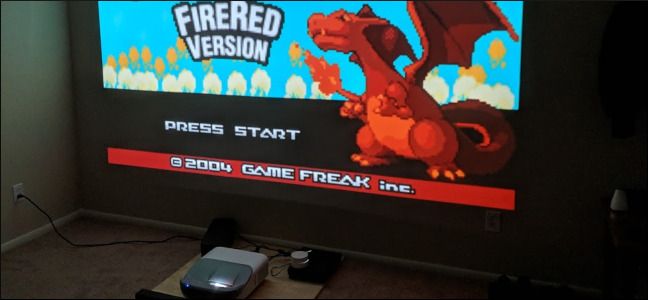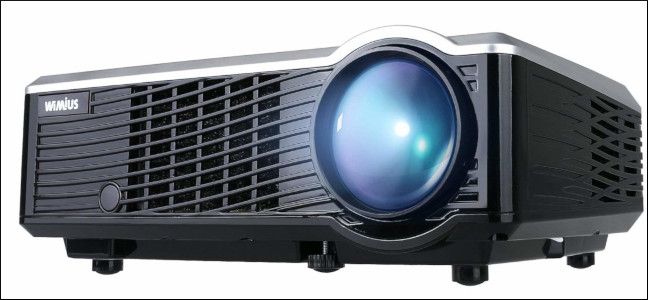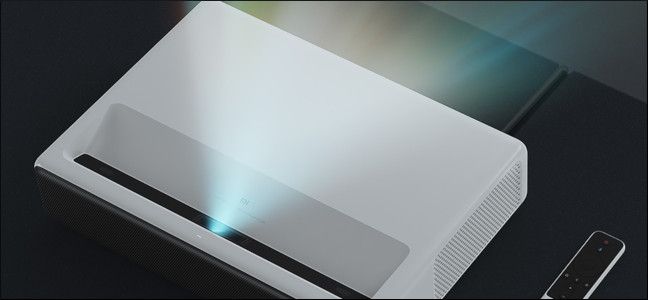Quick Links
There are a few things to consider when buying your first projector. Price range and the space you have are important, but you should also consider lamp technology. This will affect both the price and image quality of the projector.
Most of the projectors you see on the market will be lamp projectors. The lamps typically last thousands of hours, meaning you can get years of use before you need to purchase a new lamp. And since you can replace the lamp yourself, you can get even more time out of your projector by spending less than $100 on a new lamp.
Laser projectors are a bit of a different beast. They’re more expensive, but they get brighter and last much longer: typically over 20,000 hours. That means if you use one for four hours each day, your projector’s laser will last over 13 years.
How Do Lamp Projectors Work?
Lamp projectors are by far the most common you’ll see when you research for your home theater. At this point, they’re an established technology, and cheap enough to manufacture that they’ve just become the default.
The lamps inside a projector work the same way other light sources do: an electrical signal passes through semiconducting materials. This signal activates electrons in the semiconducting materials to produce photons, which are particles of light visible to the human eye.
When it comes to projectors, TVs, and other displays, there are red, blue, and green pixels inside the display. These combine into all the colors you see onscreen. Inside the projectors, you’ll see one of two things. Projectors with a Digital Light Processing (DLP) chip will reflect the light off an array of tiny mirrors, while those with Liquid Crystal Display (LCD) layers pass the light through these LCD layers the same way a TV does.
What Are the Advantages and Disadvantages of Lamp Projectors?
As mentioned above, lamp projectors have been around for a while. LEDs are now cheap enough to be used in projectors that are about $100, and in specialty projectors like night lights that are even cheaper. The lamp in most home theater projectors is replaceable, and they typically last for a few thousand hours of playback. I have a ViewSonic PX800HD, which has a rated lamp life of 3000 hours in normal mode. If you use the projector for four hours a day, the bulb will last 750 days—or just over two years. And at the end of those two years, I’ll be able to get a replacement bulb to make the projector last even longer.
The only real disadvantage with lamp projectors is they take a few minutes to warm up to their full brightness. This isn’t a big deal: when you’re at home, just wait a little bit longer to start your movie night. If you’re using the projector in a venue, turn it on five-ten minutes before you want to use it.
How Do Laser Projectors Work?
Laser projectors are relatively new. The first models shipped in 2008 and were super expensive: even into 2014, the Epson LS10000 retailed for about $8,000. Laser projectors are just now getting down to reasonable prices for most consumers, with the Xiaomi Mi Laser Projector retailing for $2,000. The lasers inside projectors work the same way as lasers in any other application: an electrical current excites electrons inside atoms of specific gasses, glasses, or crystal. The excited electrons then move from low-orbit to high-orbit around the atom’s nucleus. Once the electrons move back down to their normal state, they give off light photons that our eyes can see.
Just like with lamp projectors, the Laser lights pass through a set of mirrors and DLP chips until they get to the final projection lens. This lens is what determines how much space you need between the projector and its screen, and how expensive the final projector will be.
What Are the Advantages and Disadvantages of Laser Projectors?
The main advantage of laser projectors is they last much, much longer than lamp projectors. The Xiaomi Mi Laser Projector has a rated life of 25,000 hours. If you use the projector for four hours a day, you’ll be able to use it for more than 17 years before needing to buy another projector.
You will need to replace the entire projector, though: you can’t just replace the laser inside like you can a lamp. That’s probably not a huge deal since there will surely be other technological improvements over the years that you own the projector, making a new upgrade well worth it.
Lasers are more expensive to produce than lamps, though they have gotten a bit cheaper: that Xiaomi projector comes in at $2,000, just a few hundred more than comparable ultra-short throw projectors using lamps.
The last advantage of laser projectors is they turn on to full brightness as soon as you press the power button since they don’t need to warm up for a few minutes like lamp projectors do. Whether you use the projector at home or on the road, that’ll definitely be nice to have.
Which Is Best For You?
Neither of these is a bad choice per se, but if you have the extra room in your budget, you’ll likely be happier with a laser projector. The much longer life means your money goes farther, and not needing to wait for the projector to warm up is nice.
But, there’s also nothing wrong with saving the money now and getting a lamp projector. By the time your first bulb wears out, laser projectors will likely be less expensive than they are right now.



